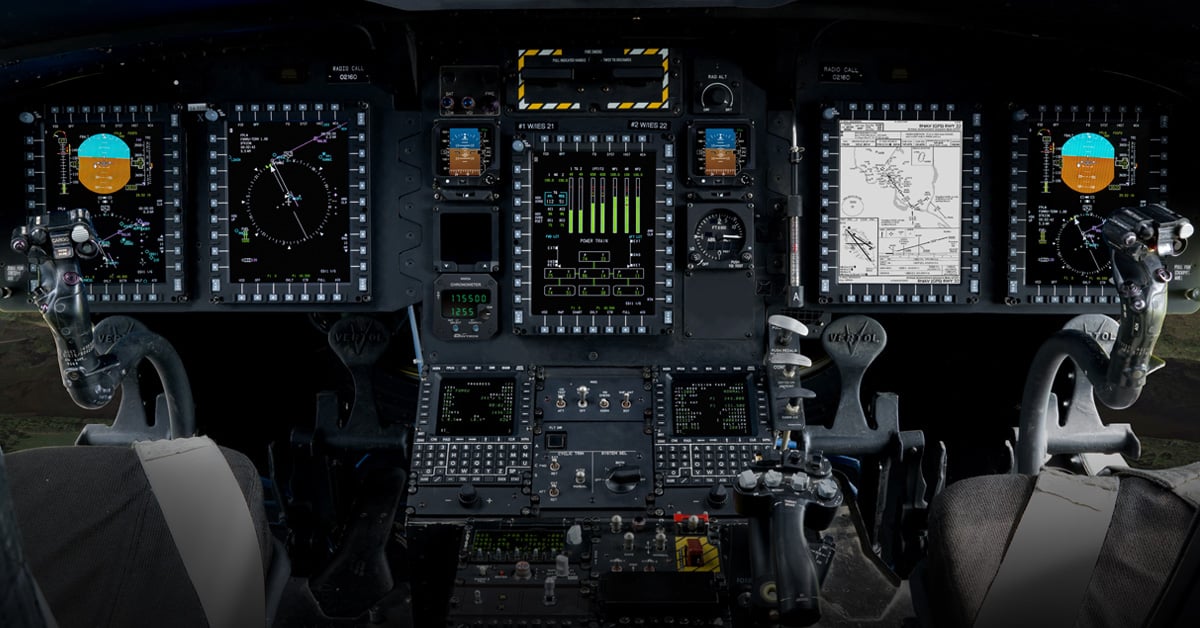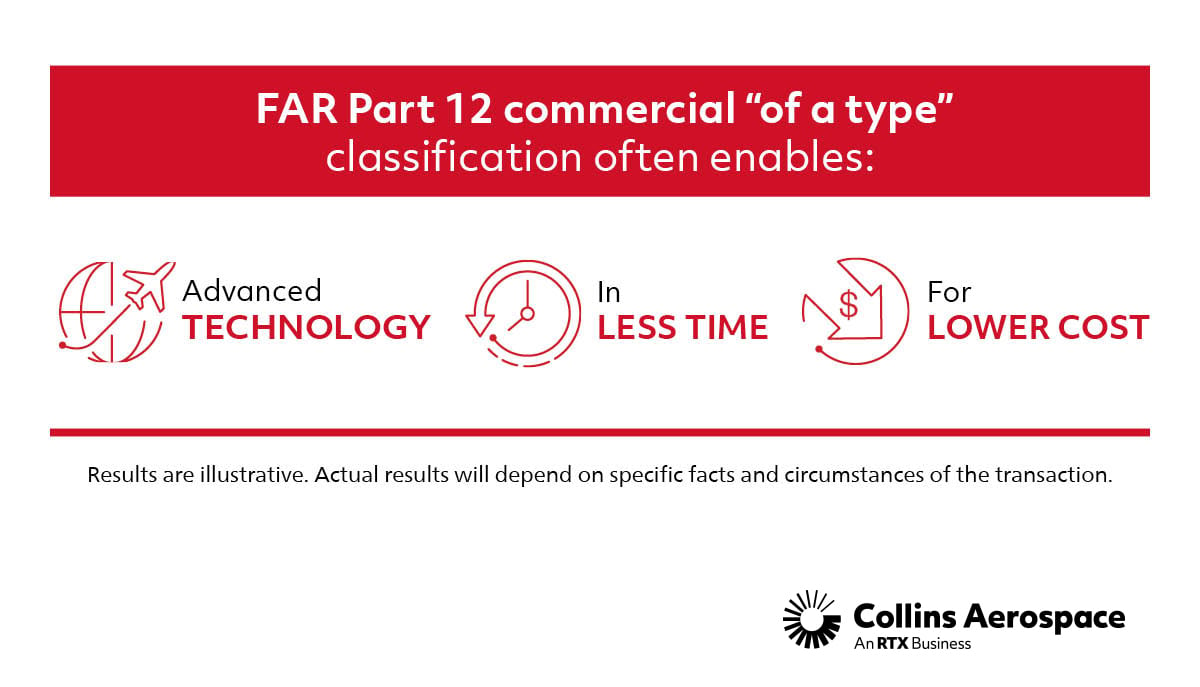
There are a number of defense programs that are transforming across the board, from Army Aviation’s Future Vertical Lift to sixth-generation fighter systems. The goal of these step-change programs is overmatch.
Overmatch, however, can be fleeting. Adversaries aren’t slowing down the pace of their own modernization programs. To maintain overmatch against them, the DoD needs to be able to acquire the latest commercially developed technologies as efficiently as possible. However, traditional US acquisition practices like Federal Acquisition Regulation (FAR) 15, under which most defense contracts are written, aren’t always conducive to the speedy acquisition of commercial innovations for defense modernizations.
This is because the taxpayer-funded research and development of aerospace and defense systems associated with FAR 15 require increased government oversight that can increase costs and delivery timelines. Though these FAR 15 processes are necessary for exclusively defense technologies, proven commercial solutions with defense applications need a more streamlined acquisition process to quickly deliver benefits to the warfighter.
Luckily, there exists an underutilized alternative that has been in place for decades now. FAR Part 12 (Acquisition of Commercial Products and Commercial Services) permits a streamlined acquisition methodology for commercially developed technologies for defense applications. While it has been a contracting option since the Federal Acquisition Streamlining Act of 1994, it’s just as or even more relevant today where overmatch can only be maintained with the continuous spiraling in of new and improved aerospace and defense products developed originally for the civilian marketplace.
The commercial aviation market supports hundreds of billions of dollars in transactions annually, far larger than the defense aviation market segment, and intense competition drives innovation to modernize systems and manufacture at high volumes, while assuring the highest quality standards are met. To stay competitive, aerospace and defense companies must invest in improving existing systems, while also investing in development of the next generation of technology for civil aviation.

What FAR 12 allows the DoD to do is leverage the fruits of this labor from the civil side of companies and apply it to the benefit of both new and legacy military platforms – all without the time, cost, and risks associated with research and development of creating systems from scratch.
The government has already done exactly that with FAR Part 12 acquisitions, saving hundreds of millions of dollars in “of a type” systems like avionics originally manufactured for civil aviation that have applicability to military aircraft. The DoD has already seen FAR Part 12 in action through the successful application of Collins Aerospace’s of-a-type systems in numerous areas.
- The Common Avionics Architecture System (CAAS) has an open systems architecture design and commercial communications, navigation, and mission subsystems. Use of CAAS on the UH-60A/L Black Hawk, H-47 Chinook, and S-70 Firehawk helicopters has saved the Pentagon more than $160 million, applied over 20 years and $300 million in commercial development, and was delivered in just 13 months versus 24-36 months.
- An Integrated Landing System (ILS) for military airfields took advantage of $40 million worth of previous investments from the company’s commercial ILS.
- The company applied $10 million of its own funds to develop the Integrated Vehicle Health Management Unit (IVHMU), reducing costs and improving operational performance for the US government. This development also led to an IVHMU in a smaller, lighter, and more functional form that reduced two line-replaceable units to one on the Apache.
- There are several other use cases where both fully compliant FAR 15 and FAR 12 proposals in response to customer requests were generated. In each use case, the price for FAR 12 was lower and the delivery time was faster for the same deliverable products, services, and quality. One such FAR 12 proposal demonstrated savings of $258M over 5 years, and 24 months on delivery time.
Commercial is not off-the-shelf
From nose to tail and from power generation to pilot seating, a vast number of commercial products and systems can be re-leveraged for military purposes under FAR Part 12. That’s because many of these systems are considered “commercial” systems, not “commercial off-the-shelf” systems. Elizabeth Sheard, director of Government Contracts for Collins Aerospace, explains the important distinction between the two.
“When most people hear ‘commercial’, they think about going down to their local shop or making a purchase online. ‘Commercial’ in defense acquisition, however, is not the same as ‘commercial off the shelf ‘, or COTS. That’s another definition.
“Commercial acquisition allows the government to procure the same type of innovation from the same manufacturing environment already producing and selling systems like landing systems to airframers in the civilian market. However, that landing gear is not a plug and play solution, even between civilian airframes. Commercial products require application engineering to any new environment, including military use. Companies often utilize the same people, technology, processes, and supply base to produce these solutions. This allows them to cut to the chase and bring these technologies to the military more quickly and without the government having to invest in the full cost and time necessary to develop completely new processes or systems.”
Better yet, the research and development of these modernizations are paid for by industry as part of their efforts in civil aviation, and flow to the government saving taxpayers millions. With certain modifications for specific aircraft platforms, for example, these systems can help create overmatch without engaging in a FAR 15 effort required for defense solutions.
This is what commercial aerospace companies are looking to provide to defense modernization efforts and clean sheet programs to not only help meet or exceed critical requirements with the best technology available, but to do so in a timely, cost-effective way.

Addressing some misconceptions
While FAR Part 12 allows the ability to innovate and deliver at the speed of need with a better value proposition for commercial technologies, there are some different acquisition processes associated with taking advantage of commercial of-a-type systems. There are none, though, that outweigh the benefits the government gets in return through modernizations and affordability.
The streamlined compliance mechanism for FAR Part 12 is one of the key differences and advantages over Part 15 for commercial products. That said, there are challenges for the acquisition community and the familiarity they have with FAR Part 15 compliance requirements related to audits and government unique systems. Compliance for Part 12 is a little more subjective in reviewing market data, and that is a good thing, said Sheard.
“Collins Aerospace, for example, is very familiar with our market, our competitors, and our products and services. Somebody that’s looking to acquire an entire system doesn’t necessarily know all the components, their market, and suppliers as well as we do. So, it takes a little bit more research, possibly, but there’s a much less overall compliance burden. FAR Part 12 is a different way of doing business than the very specific, USG unique and heavily regulated FAR 15 environment that most acquisition professionals are extensively trained in and used to using. But ultimately, it really does weigh out in favor of all parties involved.”
A final point in considering the use of FAR Part 12 in the right instances is that it promotes competition and robustness in the U.S. industrial base at all levels of the supply chain. It’s fair to say that the application of FAR Part 15, particularly when offerings eligible for FAR Part 12 are available, narrows competition.
There’s no doubt that the more streamlined and less compliance-burdened acquisition processes under FAR Part 12 can help to lower the entry barriers to the defense marketplace and open up the world of commercial innovation to the military. All for the goal of ensuring overmatch by delivering the best technology to our armed services at the best value possible.

